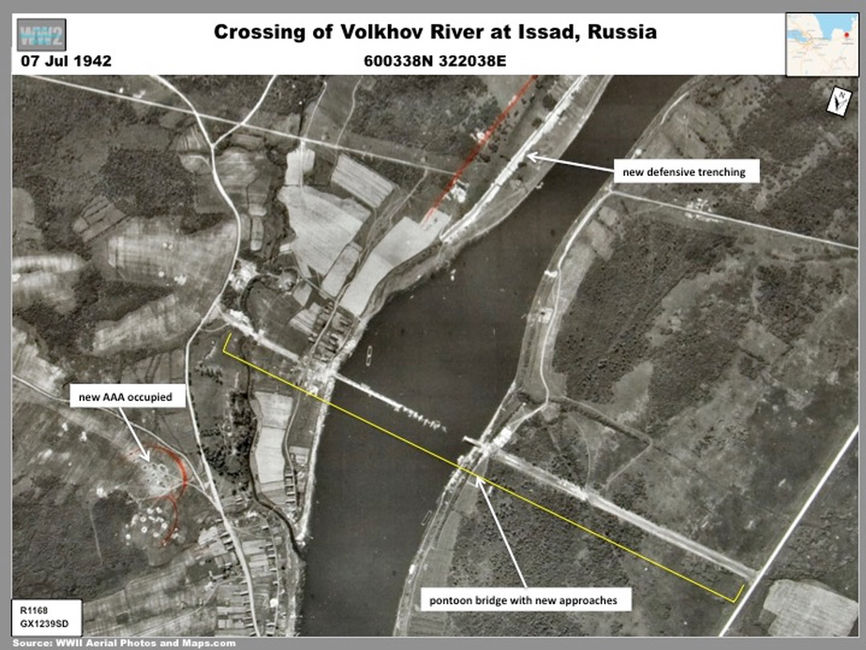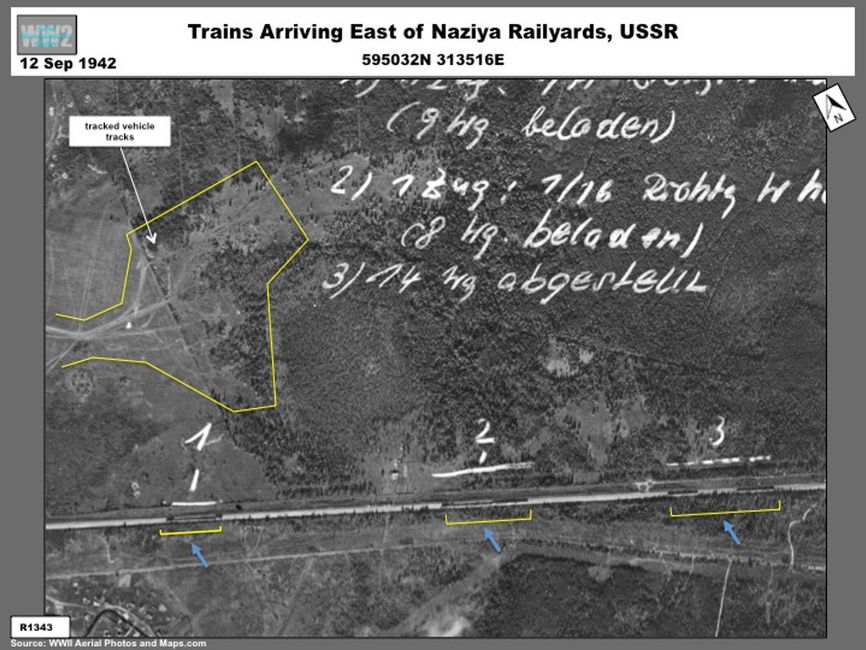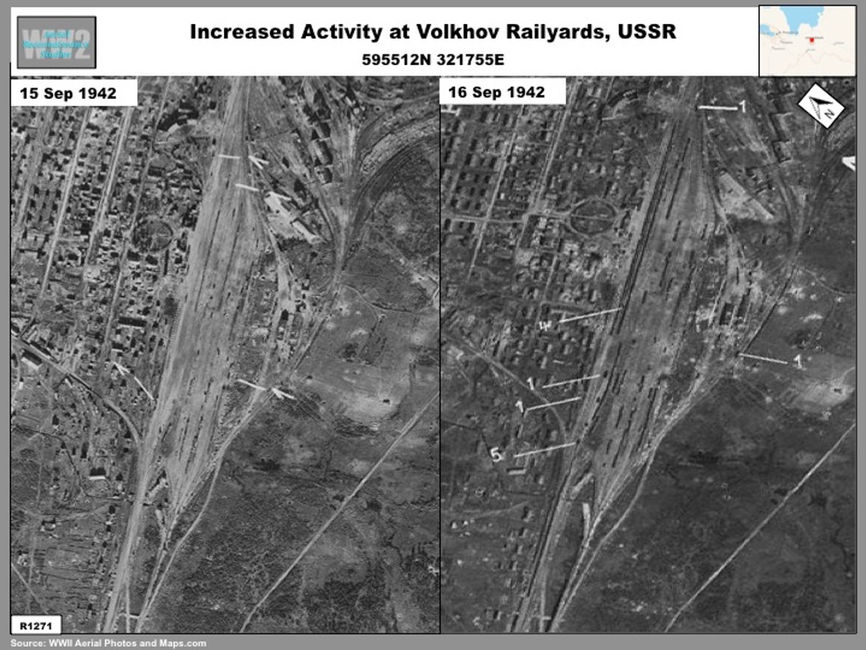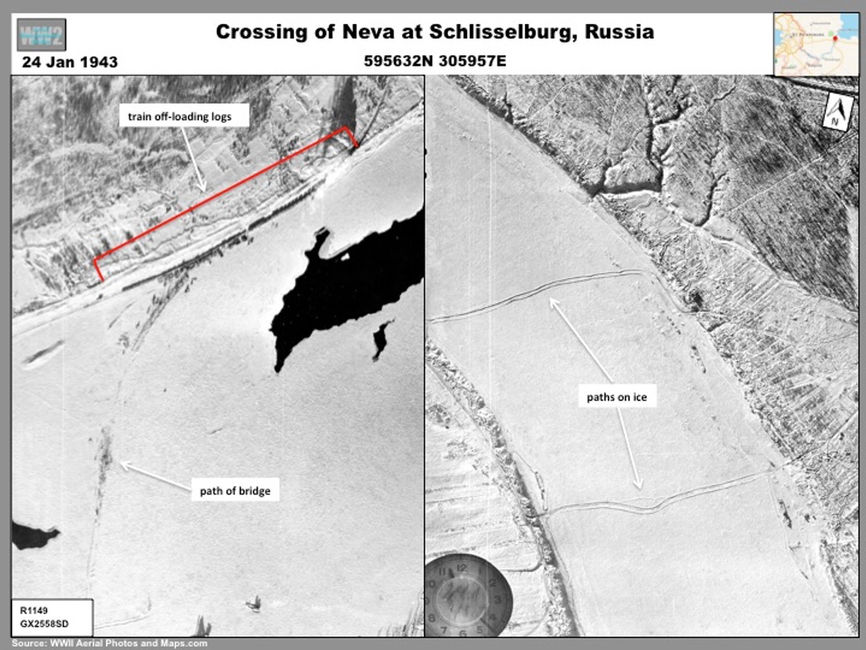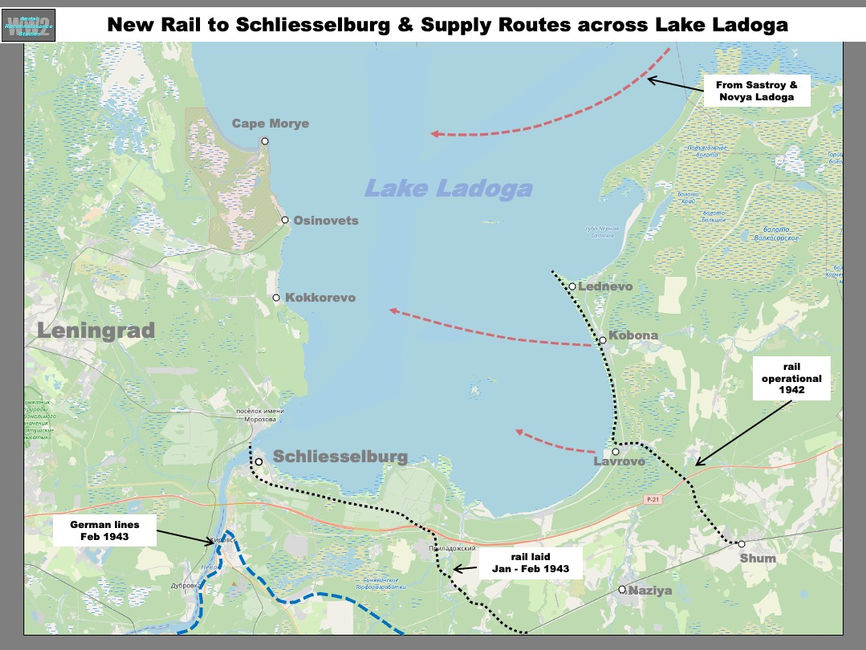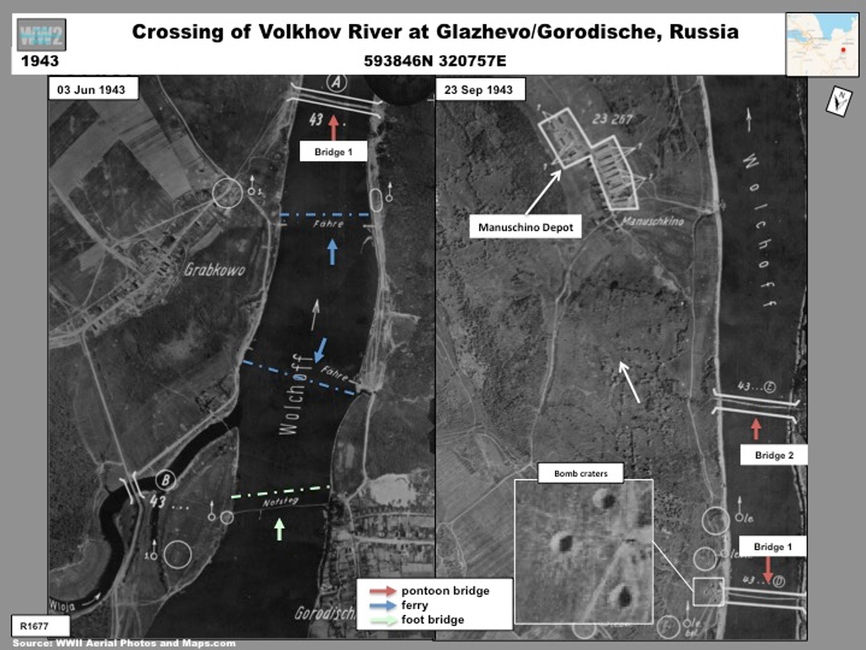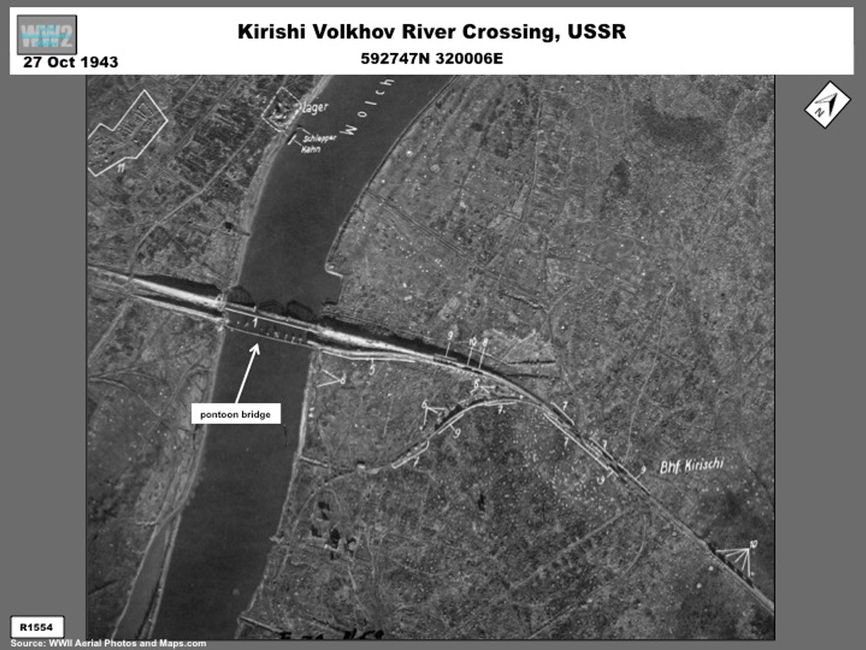WW2 AERIAL RECON STUDIES
Eastern Front
Siege of Leningrad: Operation ISKRA - Opening the Rail Corridor
Operation ISKRA, conducted by the Volkhov and Leningrad Fronts between 12 and 30 January 1943, opened a narrow corridor to Schliesselburg , which effectively ended the siege of Leningrad. The German lines, centering around Sinyavino remained dangerously close.
Soviet logistical preparations were apparent as early as July 1942 when a new pontoon bridge had been installed across the Soviet-controlled part of the Volkhov front at Issad. (Graphic). In September 1942 military trains loaded with equipment were off-loading east of Naziya (Graphic). Heavy vehicle trackage, including some by armored vehicles could be seen. An increase rail supply was observed at Volkhov in mid-September (Graphic).
The Red Army maintained a small bridgehead --the Nevsky Pyatachok-- on the east bank of the Neva. Evidence of artillery shelling, probably from German positions, was apparent near the Kirovsk power plant and on the frozen Neva on 24 January 1943, near the end of Operation Iskra (Graphic).
No time was wasted in building the rail connection to Schliesselburg, which was completed in February. By 24 January a train was already offloading logs for the first rail bridge, which had already been sketched on the ice across the frozen river (Graphic); the second rail bridge was constructed between February and May (Graphic). By September at least five bridges spanned the Neva. From the east, a new, nearly 30 km-long rail line was laid to Schliesselburg from a point west of Naziya. A train could be seen along the route on 6 May (Map, Graphic).
As the new logistic corridor opened, the Red Army began crossing the Volkhov elsewhere in preparation to push the German back from the line between Sinyavino and Kirishi (Graphics). The Germans planned a staged withdrawal back to prepared defenses around Novgorod. The first stage called for an interim defensive line along the Chudovo-Leningrad rail line, a key German supply route and coverage from May and June 1943 revealed supply areas along the rail between Tosno and Chudovo, including at an airfield at Lyuban. The depots extended northeast in the direction of the outpost at Kirshi. In June 1943 transshipment activity could be seen at Babino, 20 km northwest of Chudovo (Graphic). The Red Army retook Chudovo at the end of January 1944 and the Germans fell back to the Panther Line around Pskov.

